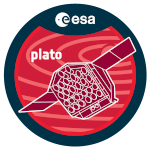Robust modelling of low-mass stars is key to understand their structure and their evolution. So far, no clear consensus appears for which physics is required to reproduce the main observables: the evolution of chemicals (e.g. lithium, beryllium), the evolution of surface rotation with time, and the state of the internal rotation constrained by asteroseismology. In order to improve stellar modelling, we need to understand these observations that bring constraints during the different stellar evolutionary phases, and better characterise internal transport processes in stars.
Using the stellar evolution code STAREVOL, we compute the surface and internal rotation evolution rates, as well as the surface lithium (Li) abundance from models of rotating stars from main-sequence (MS) to red-giant phase. These models include atomic diffusion and additional transport for both chemicals and angular momentum (Dumont et al. 2021). We constrain the transport of angular momentum in our models with the asteroseismic observations and explore the impact on chemicals along evolution.
We confirm the need for a varying efficiency of angular momentum transport along evolution of evolved giant stars for which we have in particular strong constraints on core rotation rates from sub-giant to red-giant stars thanks to asteroseismology. We succeed to reproduce the observational constraints for Li at different masses during evolution but highlight a discrepancy reaching the giant phases of solar-type stars. We show that reproducing MS surface Li abundances for solar-type stars lead to an under abundance when reaching the giant phases of evolution, challenging the identification of transport processes at the transition between MS and giant stars (Dumont et al. 2023, submitted).
|
|
|
|
Exploring surface abundance of lithium from Main-Sequence to Red giant phase with the constraint of angular momentum transport
1 : Institut Pluridisciplinaire Hubert Curien
université de Strasbourg, Institut National de Physique Nucléaire et de Physique des Particules du CNRS, Centre National de la Recherche Scientifique
2 : University of Geneva, Department of Astronomy
|

 PDF version
PDF version
